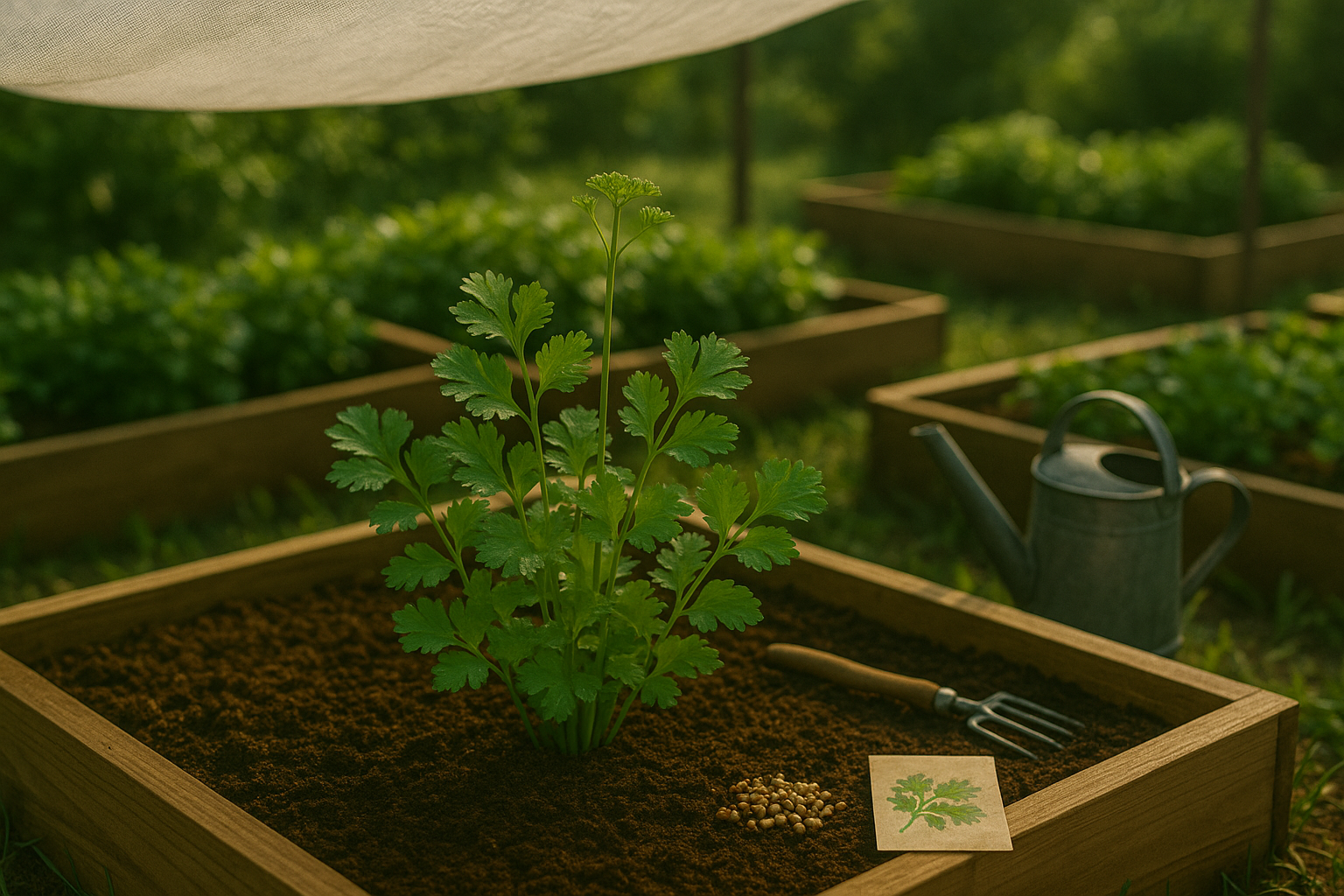The Best Time to Plant Cilantro in Raised Beds
Cilantro thrives in cool weather, making early spring and fall the ideal seasons for planting—especially if you’re growing it in raised beds. In most temperate climates, sow cilantro seeds directly after the last frost and again as summer turns to autumn.
If you’re gardening in a hot or southern region, consider planting in late winter or very early spring to avoid scorching temperatures, which can cause cilantro to bolt—meaning it sends up flowers and quickly turns bitter.
Timing is everything because warmer weather shortens cilantro’s growing cycle, leading to smaller yields and less flavorful leaves. For gardeners looking to maximize their cilantro harvest, succession planting is a game-changer: try sowing a new batch of seeds every two to three weeks. This keeps fresh, young plants coming up as older ones finish their cycle.
In raised beds, take advantage of the improved drainage and warming soil by covering the beds with light shade cloth during hot spells. This can delay bolting and preserve that bright, citrusy flavor.
For an added tip, harvest leaves regularly and pinch off any flower stalks you spot to encourage bushier growth and delay bolting. By understanding cilantro’s love for cool weather and planning staggered plantings, you can enjoy a longer season of fresh, aromatic leaves right outside your kitchen door.
Choosing & Preparing the Right Raised Bed Location
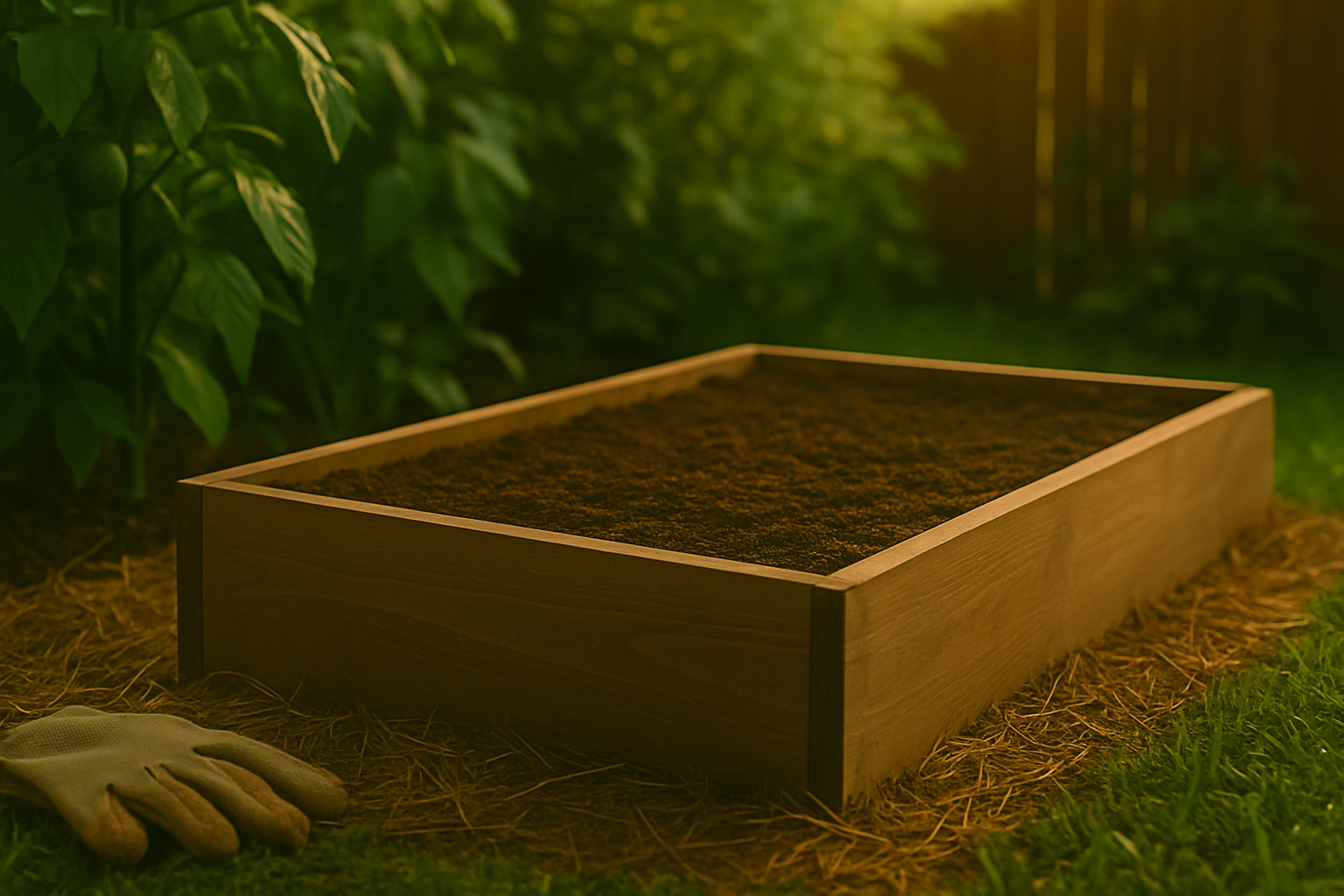
Cilantro thrives when it gets plenty of morning sunlight but is protected from the harsh afternoon heat, which can quickly cause the plant to bolt (flower and go to seed). When selecting the best spot for your raised bed, look for an area that receives at least 4 to 6 hours of gentle sunlight daily—an east-facing location or a spot shaded by taller plants or a fence in the late afternoon works well.
Drainage is also critical for cilantro since soggy roots quickly lead to rot and unhealthy plants. This is where raised beds really shine; these structures naturally elevate your planting area, preventing excess water from pooling and allowing you to customize your soil mix for ideal drainage.
Opt for a raised bed that’s at least 6 to 12 inches deep—this gives cilantro’s roots enough space to spread out while keeping the soil loose and aerated. A width of 3 to 4 feet ensures you can easily reach the center from either side without stepping on the soil, which helps preserve its structure and airflow.
Space your cilantro rows about 6 to 8 inches apart to encourage good air circulation and minimize disease risk, especially if you’re planting other herbs or veggies in the bed. With the right location and layout, you’ll be setting the stage for healthy, flavorful harvests all season long.
Soil Preparation and Planting Cilantro Seeds
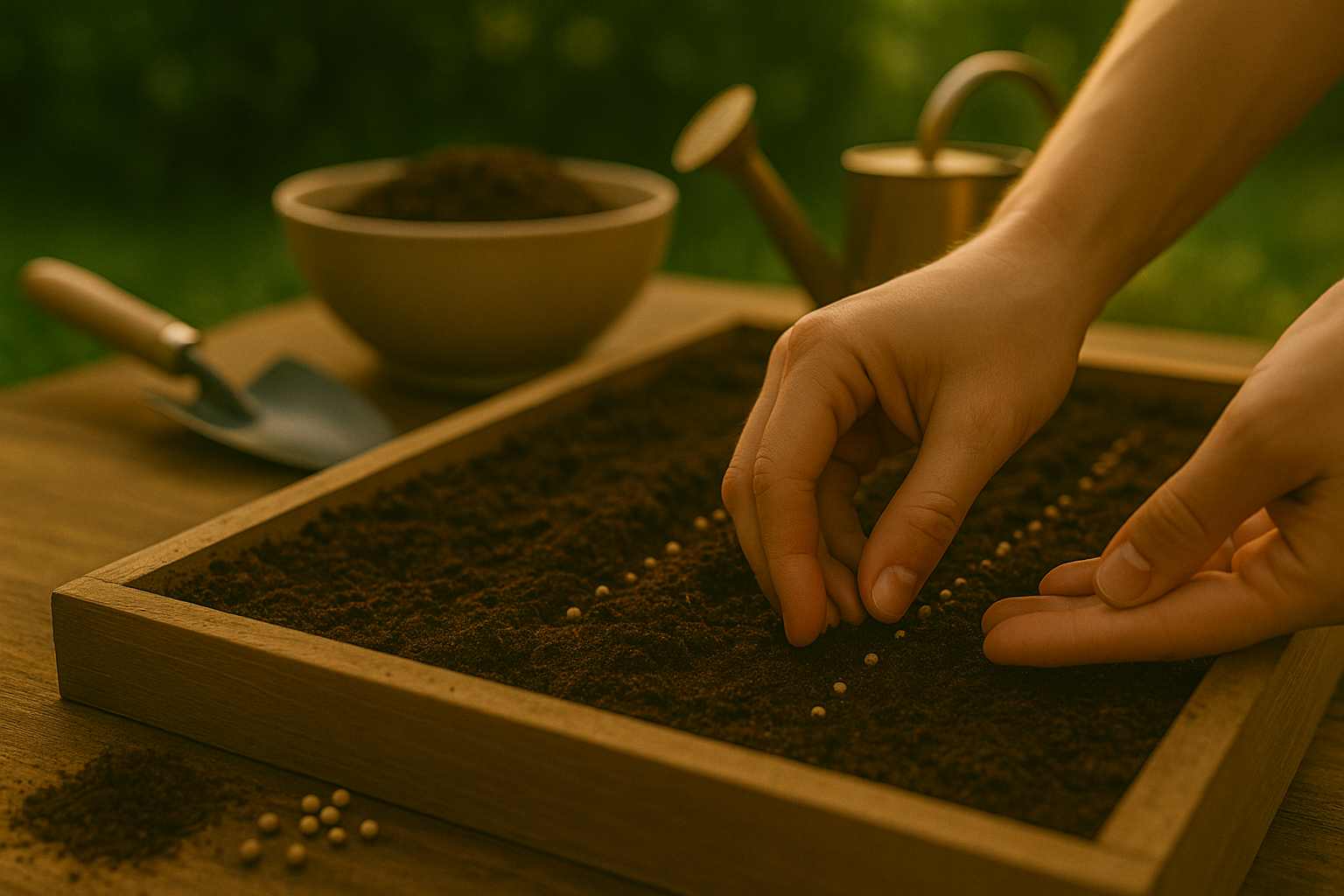
Getting your cilantro off to a healthy start begins with the right soil. Cilantro thrives in well-drained, loamy soil that’s rich in organic matter. If your garden soil is heavy clay or too sandy, mix in some compost or aged manure to boost nutrients and help retain moisture. Aim for a slightly acidic to neutral pH between 6.2 and 6.8—most gardening centers sell inexpensive pH test kits if you’re unsure.
Raised beds are a great choice for cilantro because they warm up faster in spring, drain well, and make it easy to blend in soil amendments. For direct seeding, start once the temperature stays above 50°F (10°C) at night. Make shallow furrows about ¼ inch deep and sprinkle seeds about 1 to 2 inches apart. Cover lightly with soil and gently water, keeping the bed moist but not soggy. Cilantro seeds can sometimes take up to three weeks to sprout, so patience is key.
As soon as seedlings have two sets of leaves, thin them out so plants are spaced about 4 to 6 inches apart. This helps each plant get enough airflow, reduces the risk of disease, and gives roots the room they need to grow strong. Don’t toss the tiny thinned-out sprouts—they make a tasty garnish for salads or tacos.
One of the best ways to keep a steady supply of fresh cilantro is to use succession planting: sow a small patch of seeds every two to three weeks instead of planting all at once. This simple trick means you can harvest new leaves well into summer and avoid the frustration of having your whole batch bolt and go to seed in the heat.
With good soil, careful planting, and smart timing, your cilantro patch will be lush, productive, and ready whenever you crave its fresh, zesty flavor.
Caring for Cilantro
Cilantro thrives when you give it just the right amount of water and care, so keep an eye on your soil. Aim to water your plants consistently, keeping the top inch slightly moist but never soggy. In the garden, this usually means watering every 2-3 days, but check more often during hot spells or when plants are young.
Overwatered cilantro may have yellow, limp leaves or a musty odor, while underwatered cilantro will develop dry, curling tips and may bolt (go to seed) prematurely. Use a well-draining potting mix in containers or prep your garden bed with plenty of compost to help avoid standing water.
When it comes to feeding, cilantro isn’t a heavy feeder. Too much fertilizer, especially nitrogen, can lead to more foliage but weaker flavor and fewer seeds. Instead, enrich your soil with compost before planting, then consider a very light feeding of balanced liquid fertilizer (diluted to half strength) every 4-6 weeks if plants show pale foliage or slow growth. Avoid high-nitrogen lawn fertilizers—they often promote lush but bland leaves.
Cilantro is a cool-weather herb, happiest between 50-75°F (10-24°C). Heat is its enemy: high temperatures can stress your plants and cause them to bolt quickly. Gardeners in warm climates should grow cilantro in partial shade or use shade cloths during the hottest part of the day.
Raised beds offer excellent temperature control since they warm up quickly in spring and allow for good drainage, but they can also overheat. Try lining your beds with mulch to keep roots cooler and water early in the morning so plants are hydrated before afternoon heat.
By tuning in to your cilantro’s needs and making a few strategic adjustments, you’ll enjoy healthy growth and flavorful sprigs for your kitchen all season long.
Preventing & Managing Bolting in Cilantro
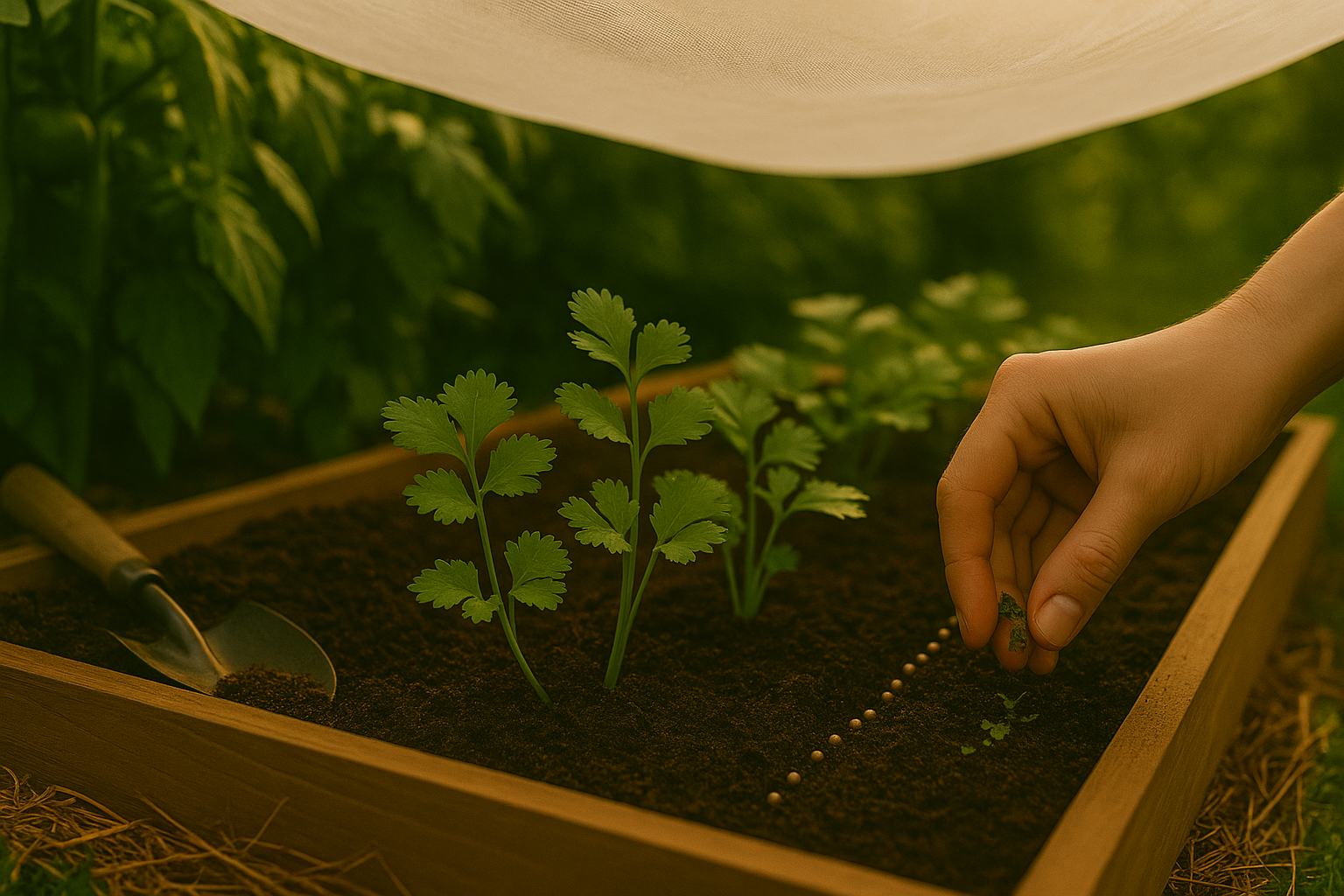
Bolting in cilantro occurs when the plant prematurely produces a flowering stem, sacrificing leaf growth for seeds. This usually happens when temperatures rise or the plant senses stress, which is common in raised beds that heat up faster than ground plots.
To prevent your cilantro from bolting too soon, opt for slow-bolt varieties like ‘Calypso’, ‘Santo’, or ‘Caribe’. These have been bred to tolerate warmer conditions longer, giving you a bigger harvest window. Regular watering and harvesting the outer leaves can also delay flowering.
When the summer heat sets in, clever gardening can make all the difference. Try placing lightweight shade cloth over your cilantro during the hottest part of the day, or tuck your beds behind taller crops like tomatoes to provide natural shade without extra hardware. Mulching with straw or chopped leaves is another simple trick: it keeps the soil cool and moist, reducing the heat stress that triggers bolting.
If you’re growing cilantro in a raised bed, be sure it’s not in direct afternoon sun. You can also use a portable umbrella or shade structure to lower the temperature.
With these easy adjustments—selecting resilient seeds and using a combination of shade and mulch—you’ll enjoy lush, leafy cilantro much longer, even when the forecast threatens to cut your harvest short.
Harvesting & Storing Fresh Cilantro
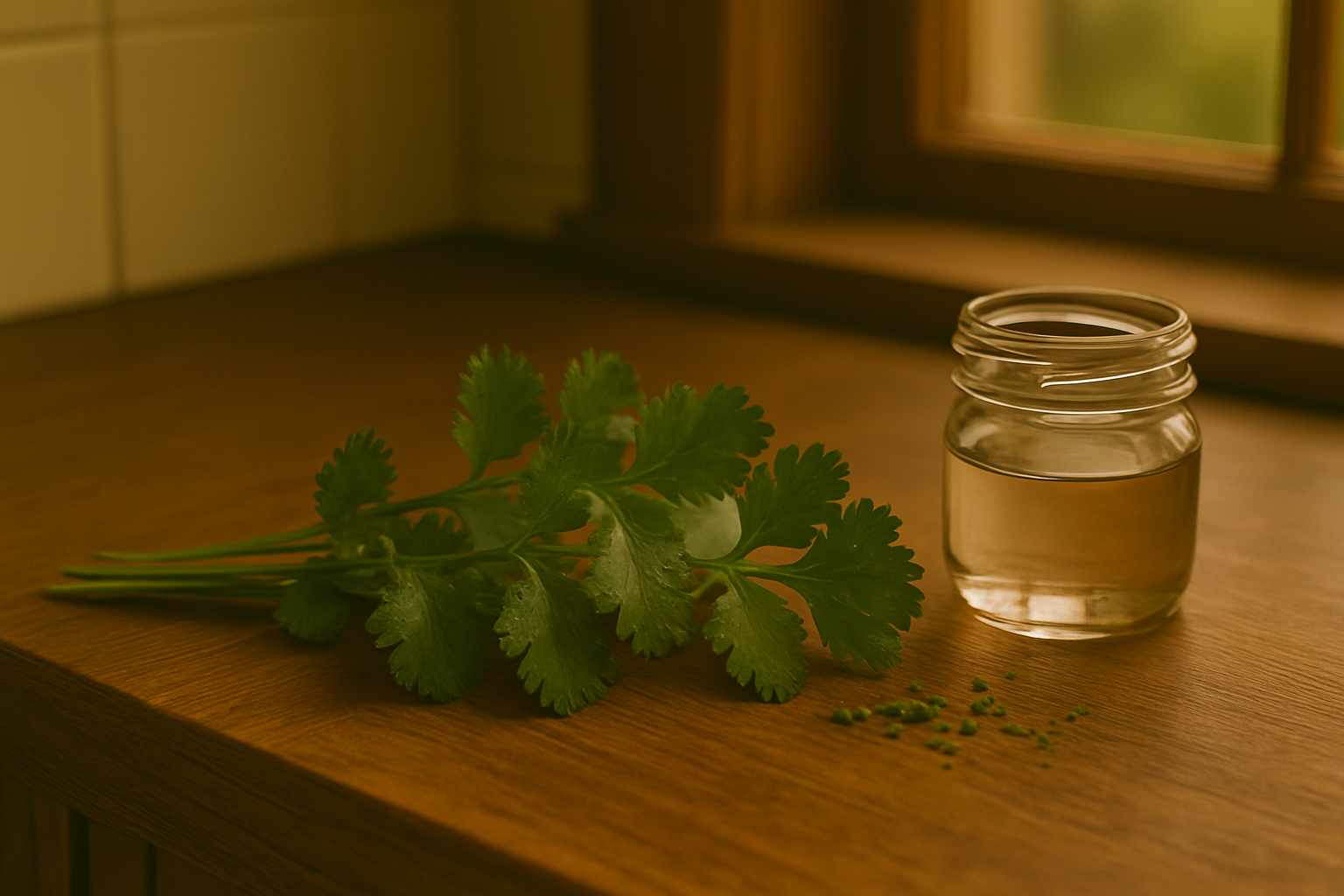
Harvesting cilantro at the right time is key to enjoying the herb’s crisp, citrusy flavor. For the best taste, snip young leaves when plants are 6–8 inches tall, and always before the plant bolts (sends up a flower stalk), as leaves become bitter afterward.
Gently pinch or cut leaves from the outer edges, leaving the center to continue growing—this “cut-and-come-again” method lets you enjoy steady harvests throughout the season. Avoid yanking the whole stem unless the plant is nearing the end of its life or you need a large batch, as continuous partial harvesting helps cilantro stay productive.
Storing Fresh Cilantro
For short-term storage, rinse leaves under cool water, pat dry, and wrap them loosely in a damp paper towel before placing in a resealable bag in the refrigerator; they’ll stay fresh for up to a week.
Long-Term Storage Options
- Freezing: Chop and freeze cilantro in ice cube trays with a bit of water or olive oil—perfect for adding bursts of flavor to cooked dishes later.
- Drying: Hang small bunches upside-down in a well-ventilated area out of direct sun, then crumble and store the dried leaves in an airtight jar.
Remember, fresh cilantro is best for garnishes and salads, but freezing or drying lets you enjoy homegrown cilantro year-round without waste.
Common Problems and Pro Tips for Raised Bed Success
Raised beds are a fantastic way to garden, but they come with their own set of challenges. Pests like aphids and slugs can quickly damage young plants. Try sprinkling crushed eggshells around seedlings to deter slugs, and release ladybugs or spray a homemade soap solution to control aphids.
Fungal diseases such as powdery mildew often thrive in crowded beds. To prevent this, water at the base of plants early in the day and space your plants to keep air moving.
Poor seed germination is another common headache, often caused by compacted or overly dry soil. Mix in plenty of compost to keep the soil loose and rich, and cover seeded areas with a light row cover to trap moisture during the initial sprouting phase.
Maximize Your Raised Bed with Companion Planting
To get the most from your raised bed, incorporate companion planting. For example, plant cilantro near tomatoes, peppers, or spinach. Cilantro can help repel harmful insects like aphids and spider mites while attracting helpful pollinators. Because cilantro grows quickly and doesn’t spread wide, tuck it around larger, slower-growing vegetables to maximize every inch of bed space.
Regularly snip cilantro leaves to delay flowering and keep your harvest going longer.
With these proactive tips—organic pest management, good airflow, healthy soil, and clever companion planting—you can overcome common raised bed woes and enjoy a productive, vibrant garden all season.
